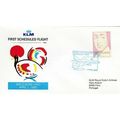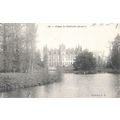Nash, Paul - We are Making a new World - art postcard (Imperial War)
- Condition : Used
- Dispatch : 2 Days
- Brand : None
- ID# : 200243617
- Quantity : 1 item
- Views : 217
- Location : United Kingdom

- Seller : justthebook (+1703)
- Barcode : None
- Start : Mon 12 Apr 2021 11:14:28 (EDT)
- Close : Run Until Sold
- Remain : Run Until Sold
Checks/Cheques
 for 1 item(s) edit
for 1 item(s) edit
Shipping Calculator
More Listings from This Seller view all
Seller's Description
- Art Postcard
- Work of art title: We are Making a New World
- Artist (if known): Paul Nash
- Media or other details: [oil on canvas]
- Publisher / Gallery: Imperial War Museum
- Postally used: no
- Stamp & postmark details (if relevant):
- Size: Modern
- Notes & condition details: slight thinning patch on back
NOTES:
Size: 'Modern' is usually around 6in x 4in or larger / 'Old Standard' is usually around 5½in x 3½in. Larger sizes mentioned, but if you need to know the exact size please ask as this can vary.
All postcards are not totally new and are pre-owned. It's inevitable that older cards may show signs of ageing and use, particularly if sent through the post. Any faults other than normal ageing are noted.
Stock No.: A1092
Please ask if you need any other information and I will do the best I can to answer.
------------------------------------------------
Postage and packing charge should be showing for your location (contact if not sure).
UK - PayPal, Cheque (from UK bank) or postal order
I will give a full refund if you are not fully satisfied with the postcard.
----------------------------------------------
Paul Nash (11 May 1889 – 11 July 1946)[1] was a British surrealist painter and war artist, as well as a photographer, writer and designer of applied art. Nash was among the most important landscape artists of the first half of the twentieth century. He played a key role in the development of Modernism in English art.
Born in London, Nash grew up in Buckinghamshire where he developed a love of the landscape. He entered the Slade School of Art but was poor at figure drawing and concentrated on landscape painting.[2] Nash found much inspiration in landscapes with elements of ancient history, such as burial mounds, Iron Age hill forts such as Wittenham Clumps and the standing stones at Avebury in Wiltshire. The artworks he produced during World War I are among the most iconic images of the conflict. After the war Nash continued to focus on landscape painting, originally in a formalized, decorative style but, throughout the 1930s, in an increasingly abstract and surreal manner.[3] In his paintings he often placed everyday objects into a landscape to give them a new identity and symbolism.
During World War II, although sick with the asthmatic condition that would kill him, he produced two series of anthropomorphic depictions of aircraft, before producing a number of landscapes rich in symbolism with an intense mystical quality.[3] These have perhaps become among the best known works from the period. Nash was also a fine book illustrator, and also designed stage scenery, fabrics and posters.[4]
He was the older brother of the artist John Nash.[4]
We Are Making a New World is a 1918 oil-on-canvas painting by Paul Nash. The optimistic title contrasts with Nash's depiction of a scarred landscape created by a battle of the First World War, with shell-holes, mounds of earth, and leafless tree trunks. Nash's first major painting and his most famous work, it has been described as one of the best British paintings of the 20th century, and compared to Picasso's Guernica.[1] "Yet it is worth remembering that the picture was a piece of official art and that it first appeared, untitled, as the cover of an issue of British War Artists at the Front, published by Country Life. ... [It] was promulgated in 1917 as covert propaganda for the Allied cause."[2]
The work was among the first oil paintings produced by Nash. It was based on his 1918 pen-and-ink drawing Sunrise, Inverness Copse,[3] which depicts the remains of a small group of trees at Inverness Copse, near Ypres in Belgium.[4] Both works were exhibited in a solo exhibition entitled "The Void of War" at the Leicester Galleries in May 1918.
Nash had signed-up shortly after the outbreak of the First World War with the Artists' Rifles. He transferred to the Hampshire Regiment and was sent to the front at Ypres. He had a passionate attachment to the natural world and regarded with horror the deformation brought about by the war.[5]
In 1917 Nash returned to England having broken several ribs in a fall into a trench.[6] Soon afterwards the Battle of Passchendaele took place which left 200,000 British killed or wounded. Nash lobbied the Foreign Office to be allowed to return to the front as an official war artist. He wrote to his wife Margaret : "I am no longer an artist...I am a messenger who will bring back word from the men who are fighting to those who want the war to go on for ever..."[5]
The painting measures 71.1 by 91.4 centimetres (28.0 in × 36.0 in). It depicts a bright white sun rising above ruddy brown clouds, shining beams onto a desolated green landscape below, with unnatural mounds of earth piled up between the skeletal remains of blasted trees. Nash's style is developed from Cubism and Vorticism.
Listing Information
| Listing Type | Gallery Listing |
| Listing ID# | 200243617 |
| Start Time | Mon 12 Apr 2021 11:14:28 (EDT) |
| Close Time | Run Until Sold |
| Starting Bid | Fixed Price (no bidding) |
| Item Condition | Used |
| Bids | 0 |
| Views | 217 |
| Dispatch Time | 2 Days |
| Quantity | 1 |
| Location | United Kingdom |
| Auto Extend | No |



















